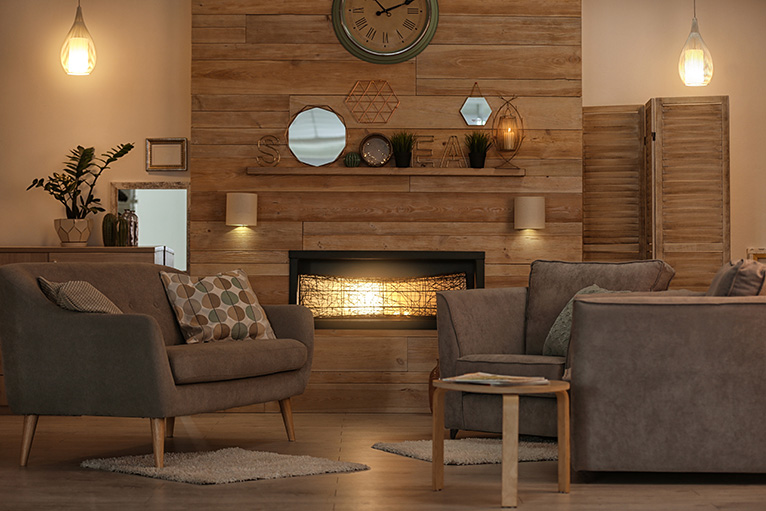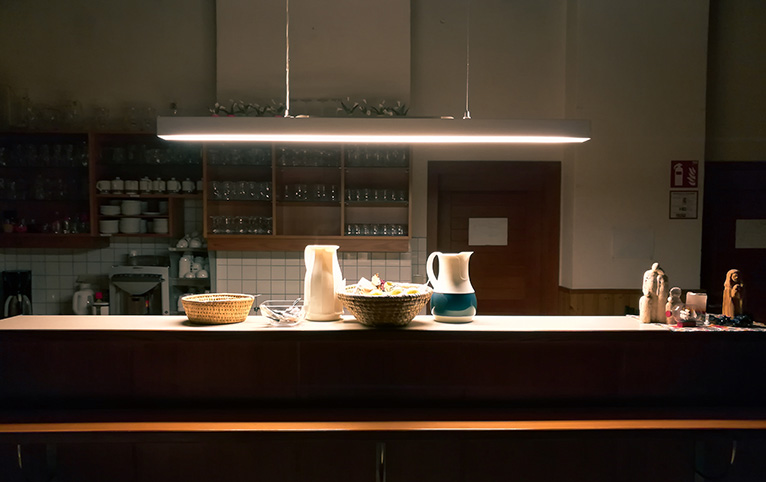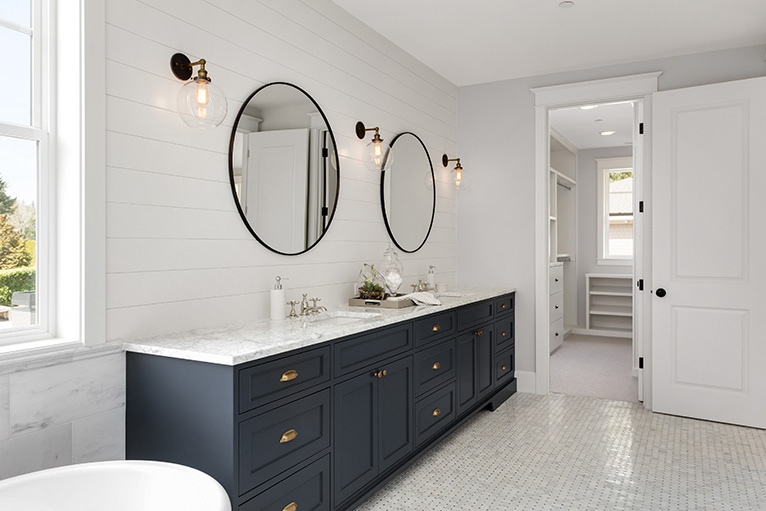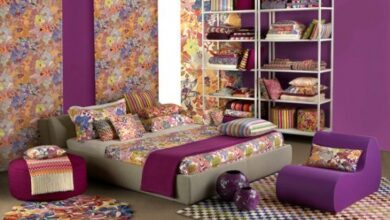Each room in your house serves multiple purposes. For example, the bedroom is not just a sleeping space, but it’s also a place where we curl up with a book, and for some, it may double up as a home office. That means that you should design the lighting in each room to fit your varying needs.
Discover three different types of home lighting and how they can transform your home into a comfortable and inviting environment, in the blog post below.
The three types of home lighting
There are three basic types of lighting for homes: ambient, task, and accent lighting. Each of these plays a critical role in different rooms. In many circumstances, there’s a crossover between the different types. For example, pendant lighting in the dining room may serve as a task and ambient light, depending on how it is installed.
1. Ambient lighting

This lighting is also known as general lighting, as it’s the primary source of light in a room, offering uniform illumination throughout any space. In addition, it sets the tone of the room while also offering enough light to allow people to move around safely. At times, ambient lighting doubles up as task lighting.
Recessed lights, track lights, chandeliers, standalone LED lighting fixtures, and other ceiling lights are examples of ambient lights. For a welcoming feel, many homeowners opt for industrial LED lighting with a warm temperature. In gardens and at the entrance of your home, ambient outdoor LED lighting is ideal to improve visibility and boost security. For instance, wall pack lights illuminate outdoor areas frequented by vehicles and pedestrians.
When to use ambient lighting
The primary purpose of ambient lights are to get you from point A to B safely. However, when used correctly, they can also create fantastic mood lighting as the light captures the soft curves of the architectural features in your home. Ambient lighting options such as chandeliers, pendants, recessed lighting, and ceiling lights create a warm and inviting environment in your home.
Ambient lighting ideas
- Ceiling-mounted lights or recessed fixtures that direct light downwards.
- Wall sconces and floor lamps that illuminate the entire space.
- Cove lights, floor lamps, and pendants that reflect the light off ceilings and walls.
2. Task lighting

As the name suggests, task lighting is used to illuminate a specific focal area. For example, in a study, task lighting will illuminate the work area, offering the right amount of light to allow you to focus on the details of your task.
Task lighting is best for reducing eye strain caused by glare. This type of lighting is great in areas where you complete stationary tasks, like cooking, reading, crafts and studying, as they limit shadows, cut back glare, and improve the productivity of the designated area.
When to use task lighting
Task lighting helps to stimulate the brain cells as the contrast encourages you to focus and stay alert, making it the perfect option for home offices, kitchens and studies.
Task lighting ideas
- Recessed and track lights.
- Pendant lighting.
- Under-cabinet lighting.
- Floor and table lamps.
- Bathroom vanity lights.
- Directional gimbal recessed fixtures.
Task lighting works great in kitchens, where under-cabinet lighting increases visibility on countertops.
3. Accent lighting

Accent lighting is more for decorative purposes. The primary function of this type of lighting is to create a focal point, add a dimension to spaces, and draw attention to unique architectural design.
Accent lights like track lights, slimline bars, and wall-mounted fixtures are known to add drama to the environment and draw the eye to the focal point it has created.
When to use accent lighting
Accent lighting creates a sophisticated environment indoors and outdoors. These lights highlight your home’s architectural details and creative features like artworks, fireplaces, green walls, and textured walls.
When installing accent lighting, ask yourself what you want to achieve in the room. Are there any elements or features you’d like to highlight? Are there any decorating blunders you’d like to disguise? Consider the location of the most attractive pieces of furniture or artworks and use accent lighting to highlight them.
Accent lighting ideas
- Wall-mounted luminaires
- Ceiling lights
- Recessed spotlights
- Track lights
Chandeliers and wall sconces with dimmer switches can easily double up as accent lighting. Also, track and recessed lighting can create layered lighting, depending on how you arrange them.
Once you’ve finished furnishing, arranging and accessorizing your home, make the most of your efforts with effective lighting design using the tips above. For more advice, get in touch with an expert electrician on Rated People.




